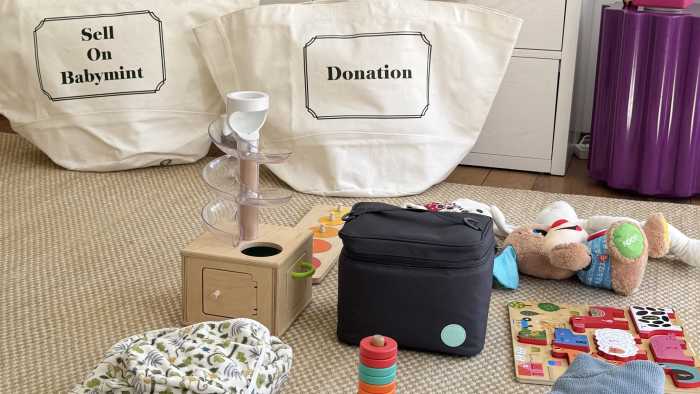Helen Black eyed the large piece of white silk that covered the table in front of her and then proceeded to splatter it in varying shades of green, blue, and yellow fabric paint. She regarded it for a few more moments, thinking about what else she would like to use to embellish it further. For this silk rectangle has special meaning; once decorated, it will become her tallit, a one-of-a-kind Jewish prayer shawl that she will first use when she celebrates her upcoming bat mitzvah.
Helen, 12, is one of several students who took part in a recent tallit making class at Congregation Tehillah in Riverdale, led by Susan Schorr, who regularly works as a layperson helping families at West End Synagogue on the Upper West Side. A decade ago, Schorr fell into tallit making when someone simply suggested she’d be good at it, and she now teaches one-on-one classes as well as group classes for synagogues in New York City and New Jersey.
Traditionally, the tallit is made from white wool with black, blue, or white stripes along the perimeter and is often passed down from father to son or daughter. The black stripes symbolize the destruction of the Second Temple while the white wool with the blue stripes is reminiscent of the colors of the Israeli flag. But students in Schorr’s classes are free to express themselves creatively and use various colors, designs, and patterns of their choosing.
Schorr’s tallit making classes are divided into three sessions. Before the creative process can begin, she explains the importance of the prayer shawl in Jewish tradition and the significance of donning it on the occasion of a bar/bat mitzvah. “We study the text from Numbers 15:37-41…the students are anxious to get to the paints, but I want them to think about the whole idea of creating a space for prayer and making a connection to the community,” Schorr explains. Next, on a print out of a scaled drawing of a tallit, the kids sketch an idea of how they want their own to look. Finally, they execute their creation on the 72-inch silk expanse of their tallit.
Some students begin the class knowing exactly what they are going to create on their tallit. Josh Berk, one of Schorr’s previous students at West End Synagogue, immediately knew that he wanted to depict the galaxy on his. Schorr remembers, “When I got home that night, he had already emailed me a picture of what he wanted to use as his model.” Others, like Rebecca Gurvets, experiment with several different techniques and designs before settling on one that speaks to them. “I didn’t really have a story in mind when I made my tallit. I had tried many techniques and colors and patterns. I finally ended up choosing some colors and I started singing, and then I painted to the song,” Rebecca recalls.
The sense of religious fulfillment that the boys and girls feel after fashioning their own one-of-a-kind tallit under Schorr’s benevolent guidance is priceless. Watching them paint, it becomes strikingly clear just how unique the pieces of white silk were becoming, each transforming into distinctly individual works of self-expression. The same could said for Schorr’s class and its unique combination of fun, experimentation, and tradition,
While the majority of the tallitot in Schorr’s classes are made from silk, Schorr will provide another material if the student so desires. For a vegan student, “I found a fabric that was made from 100% recycled soda bottles,” she says. Another girl was especially environmentally conscious and was concerned about the death of the silkworms after their silk had been harvested. Schorr managed to find someone in Oregon who works with silk farmers in India to produce cruelty-free silks.
Rather than paint on her tallit, former student Emily Kohn chose to sew. Using pink silk, she embroidered on her tallit the musical notation of “Mi Sheberach,” a prayer for which she has an affinity and which she performed on her violin at her bat mitzvah.
“This way, I’d be able to be wrapped in music, literally,” Emily explains, “while chanting Torah and celebrating this amazing moment in my life.”





















